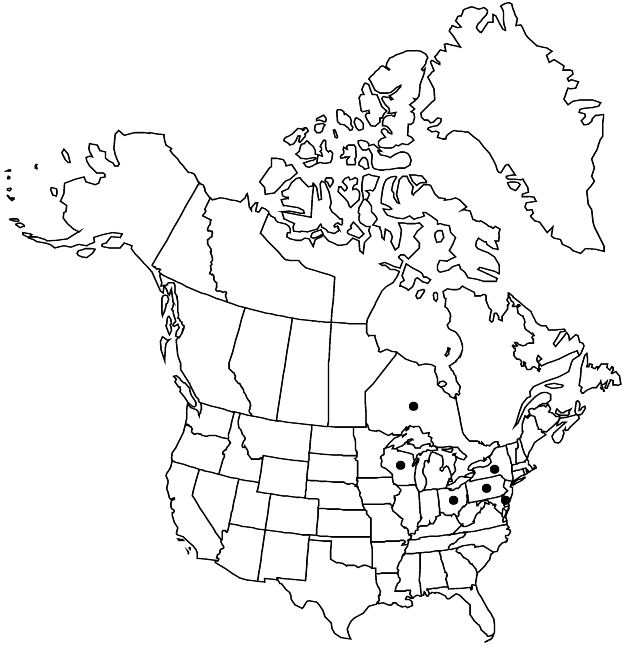Crataegus stolonifera
Bot. Gaz. 35: 109. 1903.
Shrubs, 25 dm. Stems: twigs: new growth golden green, glabrous, 1-year old reddish-brown, 2-years old gray; thorns on twigs usually recurved, 2-years old shiny reddish-brown or darker, ± slender, 3–5 cm. Leaves: petiole 1.5–2.5 cm, glabrous, sparsely glandular; blade ovate, 4–5 cm length/width = to 1.5, subcoriaceous, base cuneate to broadly cuneate (leaves on extension shoots broadly ovate to ovate-deltate or deltate, base nearly truncate), lobes 4 per side, sinuses moderately deep, lobe apex acute, margins serrate, veins 4 or 5 per side, apex acute to subacute, adaxial surface finely appressed-pubescent young, glabrescent; extension-shoot leaf-blades broadly ovate to ovate-deltate or deltate, widest in basal 1/4, nearly as long as wide, sinuses deep, LII 25–50%, base nearly truncate. Inflorescences 5–10-flowered; branches glabrous; bracteoles absent or few, margins glandular. Flowers 15–18 mm diam.; hypanthium glabrous; sepals broadly to narrowly triangular, 6–7 mm, margins glandular-serrate; stamens 10, anthers rose-purple; styles 3 or 4. Pomes red, suborbicular, 9–12 mm diam.; flesh mellow when ripe; sepals reflexed; pyrenes 3 or 4, dorsally grooved.
Phenology: Flowering Apr–May; fruiting Sep–Oct.
Habitat: Brush, thickets, roadsides
Elevation: 10–400 m
Distribution

Ont., Del., N.Y., Ohio, Pa., Wis.
Discussion
Crataegus stolonifera has been recorded sporadically from Wisconsin to southern Ontario and New York, to Pennsylvania and Delaware. The species is similar to C. populnea, differing primarily in the deltate, deeply incised extension-shoot leaves and more mellow fruit.
Selected References
None.
Lower Taxa
"thin" is not a number."glabrous" is not a number."adnate" is not a number."dm" is not declared as a valid unit of measurement for this property.